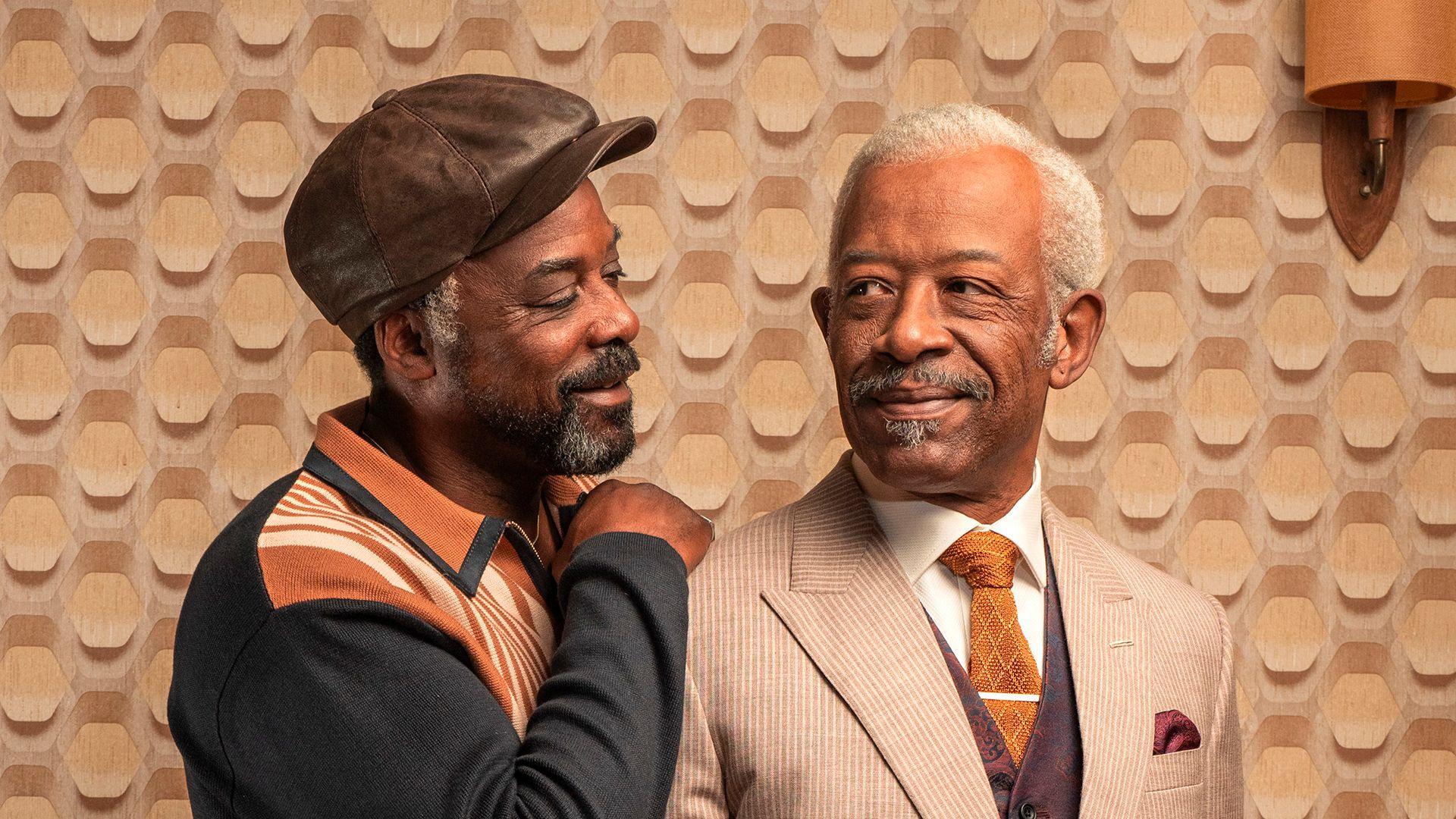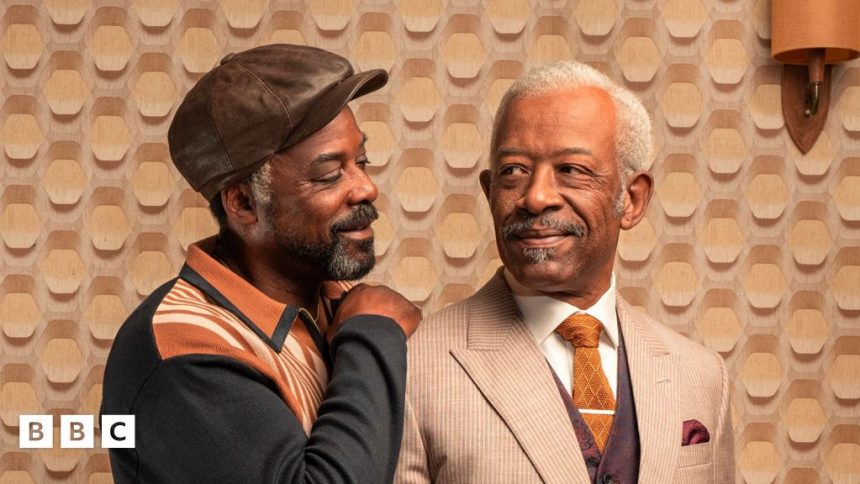Mr Loverman: How BBC series explores black LGBT life

Mr Loverman stars Lennie James (right) as a man who has had a decades-long secret romance with a male friend
-
Published
As BBC drama Mr Loverman airs, one activist remembers life as a gay, black man in the UK – and discusses how much has changed.
In 1972, activist Theodore “Ted” Brown helped organise the UK’s first Gay Pride in central London, which saw thousands march and gather for a mass kiss-in. Brown remembers being one of the few black people in attendance.
In his view, Britain was “more concerned with racism than homophobia” at the time – but he remembers realising that the language of racism and homophobia were similar.
Brown went on to co-found Black Lesbians and Gays Against Media Homophobia, an organisation fighting for the equality of British LGBT people – and has been campaigning for nearly 50 years.
Brown came out as gay to his friends and family when he was 15 in 1965, two years before homosexuality was partially decriminalised in England and Wales.
BBC drama Mr Loverman, based on the novel by Bernardine Evaristo, looks at life for black, gay men in the UK – like Brown – via the fictional Barrington Jedidiah Walker (played by Line of Duty star Lennie James).
Walker is a seventy-four-year-old, Antiguan-born, exuberant Hackney personality, renowned for his dapper taste and fondness for retro suits – who has been having a secret, passionate affair with his best friend and soulmate, Morris (played by Ariyon Bakare).
One critic, external called the series “magnificent TV that will tear your heart open”.
Ted Brown (left) was part of the Gay Liberation movement in the 1970s alongside figures like Peter Tatchell (right)
Both characters are first-generation Windrush men, and the pair try to come out to Carmel, Walker’s religious wife. The series explores the complexities of love and homosexuality in the black British community, and the wider impact of coming out as an older man leading a double life.
Early in the series, for example, Walker hears his wife’s friends from church refer to homosexuality as a “disease” and an “abomination”.
Later in the series, we see Walker being beaten up by a gang of white youths. Marc Thompson, an activist who was a consultant on Mr Loverman, says this serves to show that “black communities are no more or less homophobic” than others.
Mr Loverman explores the lives of multiple generations of black British LGBT people
In Walker’s native Antigua, there were previously laws criminalising same-sex acts that had their roots in British colonial-era legislation forbidding “buggery” and “indecency”.
Lady Phyll Opoku-Gyimah, a human rights activist and CEO of UK Black Pride, argues that “one of the many lasting legacies of the British Empire is the cultural impact of homophobia”.
‘Open up conversations’
In his decades of campaigning, Brown says he experienced physical violence “a handful of times”.
According to recent Home Office data, hate crimes motivated by sexual orientation have fallen for the second year in a row, to 22,839 reported incidents in England and Wales.
But, in Brown’s view: “For young black men, the world can sometimes feel isolating.”
In earlier decades, public figures were sometimes subjected to abuse, like gay footballer Justin Fashanu, who is referenced in Mr Loverman.
Nowadays, Brown says there have been changes in how black, gay men are perceived – and he instead sees a “sense of pride and positive role models”.
He adds: “Today, TV, organisations, music, magazines, and websites allow black LGBTQ+ people to see themselves and connect, creating community.”
Indeed, there are now high-profile black LGBT figures including British Vogue cover star Munroe Bergdorf, number one Head & Heart singer-songwriter MNEK and Olympian Dame Kelly Holmes.
According to Thompson, Mr Loverman “tries to provide different perspectives about being black and LGBTQ+ across the decades”.
He adds: “Mr Loverman is a powerful reminder that black LGBTQ+ people have always been here and been part of our communities.”







